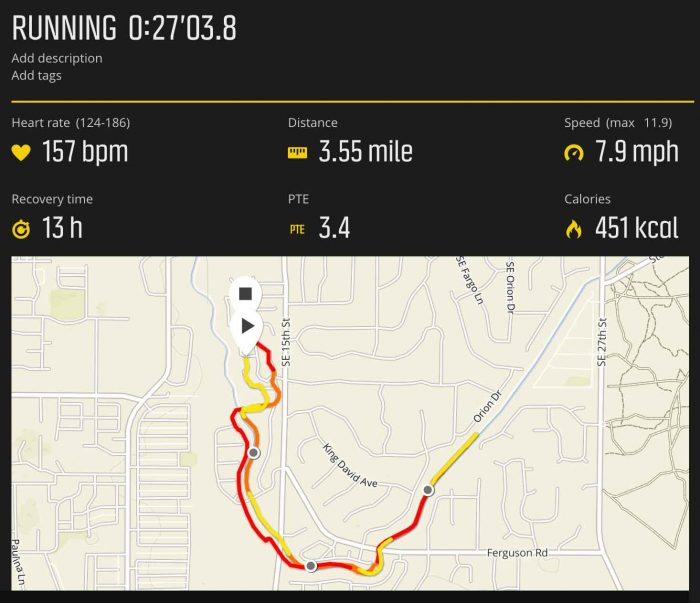A next-generation outdoors/exerciser watch, the Spartan Sport Wrist HR has requisite workout tools plus a 24/7 activity tracker mode built-in.
It’s an even seven minutes into an afternoon run. My watch buzzes, denoting a mile complete. Pace and heart-rate numbers flash on the screen.
For a month the Spartan Sport Wrist HR has served as my training partner. It also tracks my steps, calories burned, and other metrics during the day.
The watch is a premium piece at $499. For that price you get a color touchscreen, optical heart-rate gauge, and features to measure and save biologic and geographic data.
Review: Suunto Spartan Sport Wrist HR
A unique feature is the svelte heart-rate sensor. Instead of a chest strap, Suunto works with biometric-sensor brand Valencell to add LEDs that measure blood flow in your wrist.
I have long found chest-strap heart monitors annoying. Watches like this Suunto give convenience for anyone hoping to monitor their heart rate without a strap.
In my review, the sensor worked but had issues. For one, to get a readout you need to move the watch up further than it’s normally placed on your wrist then buckle it tight.
Fortunately, Suunto uses a soft silicone strap, and the material, even when tight, does not chafe.
Accuracy was close to that of my chest strap monitor, but not dead on. I also found the watch took a while — sometimes even up to a few minutes into a run — to register a heart rate.
And the company concedes that optical heart-rate sensors are not as accurate as straps. “Currently, the best optical wrist measurements stay 90-percent of the time within 5-percent of the chest-measured heart rate,” Suunto notes.
Performance varies user to user. Optical sensors, Suunto says, tend to have “individual variance depending on user’s surface blood circulation properties.”
Suunto Spartan HR Training Watch
Beyond the heart-rate feature, the Spartan HR proved a solid training partner. Its interface is easy to learn, including swipeable screens and three buttons to control function.
The watch is made for multi-sport athletes. As such, there are modes for a number of sports: biking, running, swimming, and hiking some examples.
It tracks pace, speed, distance, elevation, GPS, heart rate, and much more. The watch saves each workout, and a user later can upload the data to Suunto’s Movescount site for analyzation.
As noted, this watch was built to be both a daily activity-tracking and sport watch. The tracker features include 24/7 heart rate; steps counted; and calorie-burn rate.
You can see steps in real-time on the main watch face. Swipe a few screens over and the Suunto gives you a weekly breakdown of your movements, a bar graph charting each day.
Suunto Spartan: Daily Wear Watch

As a regular watch, Suunto offers a few looks. I liked the digital readouts while working out. But you can switch to an old-school look with hash marks and rotating hands.
Suunto claims the watch has an eight hour battery life in full power mode, up to 30 hours with the GPS set to capture once every 60 seconds. I found these stats to be accurate. The watch in normal use, a workout every afternoon, needed a recharge every few days.
As with many exercise watches, the data geeks can go deep. I tend to use high-level metrics, including pace, distance, and heart rate. But Suunto built this watch for anyone, up to pro athletes and Olympians. Its advanced features can give recovery and nutrition advice, build detailed graphs, and integrate with bike power meters.
Suunto Spartan Sport Wrist HR Highlights
- Battery life up to 12h in training mode
- Wrist HR measurement
- GPS/GLONASS route navigation
- Steel bezel, mineral crystal glass, 100 meter water resistance
- Sport expertise and support for more than 80 sports with racing and interval use
In the end, this is a pricey watch that will perform. Its heart-rate function could be better, but for most people the 5-percent variance, as outlined above, is not a game over.
For anyone needing a powerful training device that captures heart rate, pace, GPS data, and myriad other stats, the Suunto is a solid choice.












